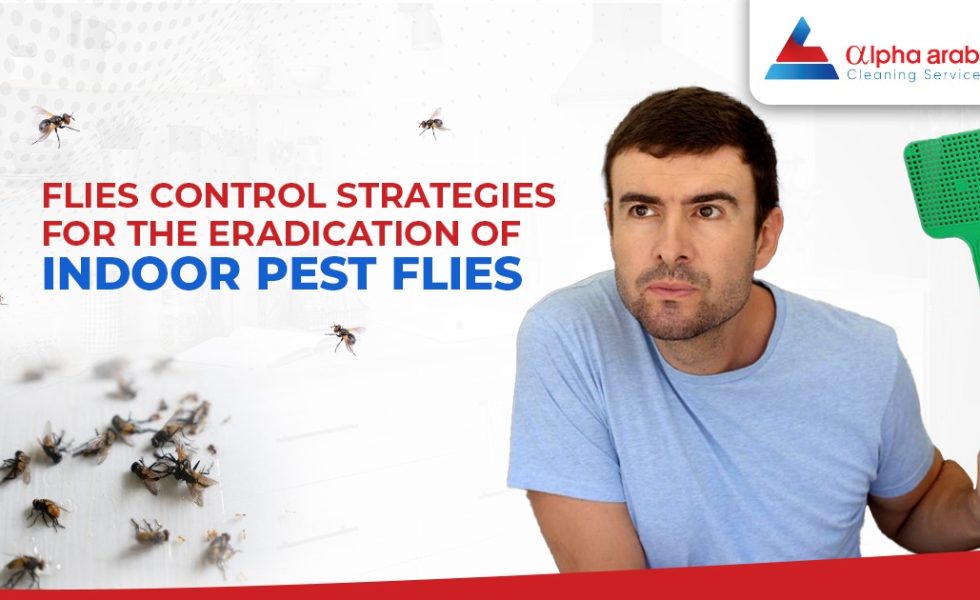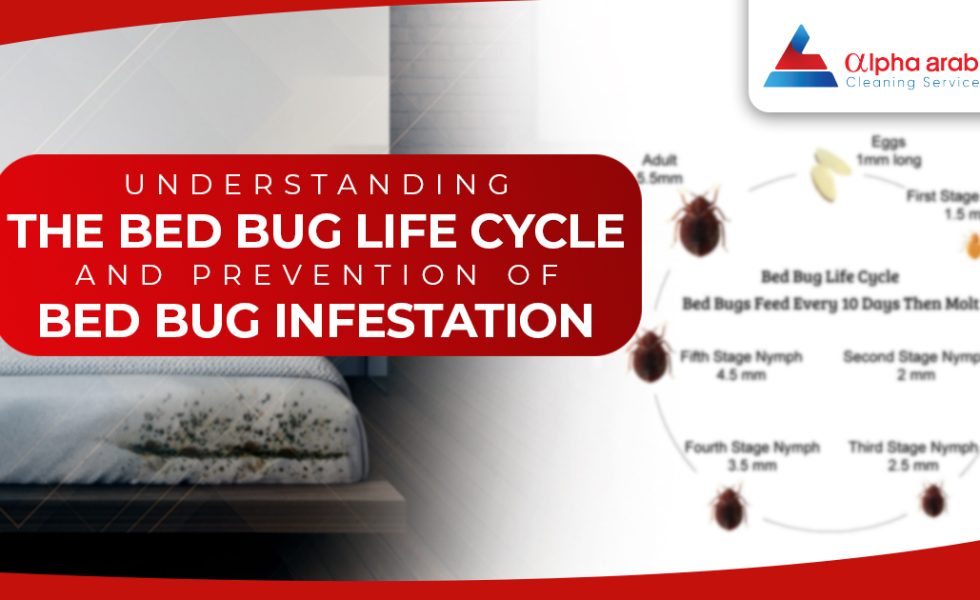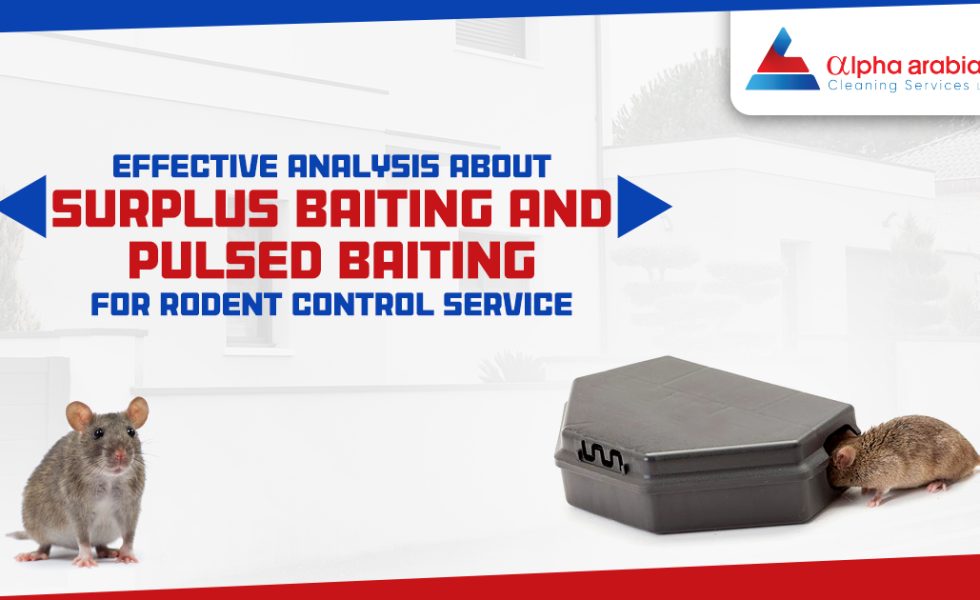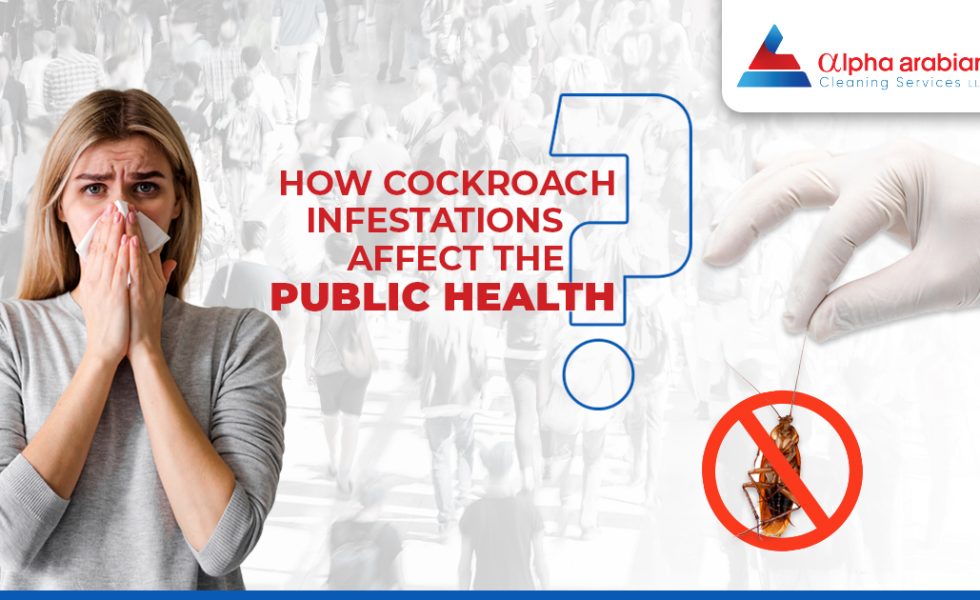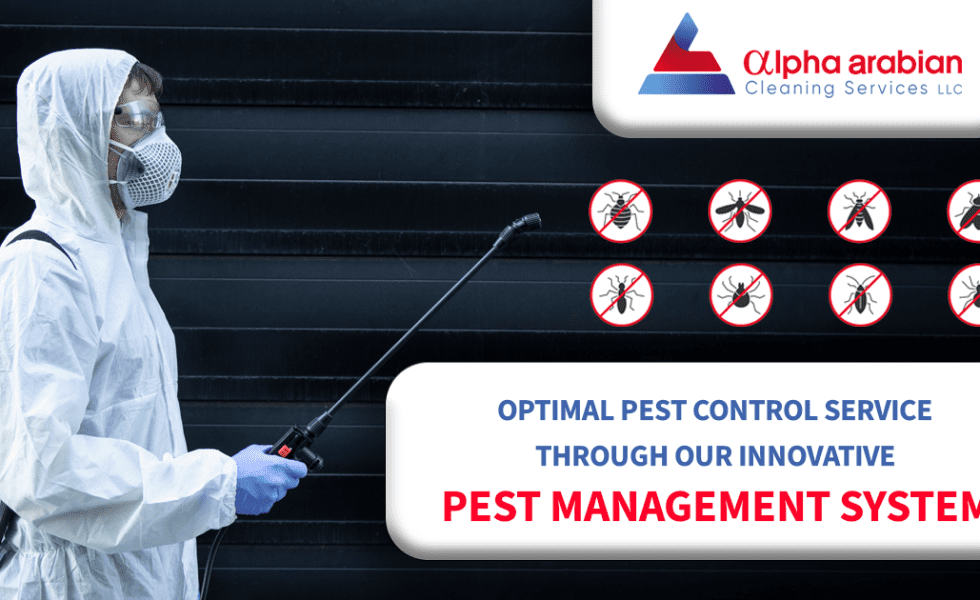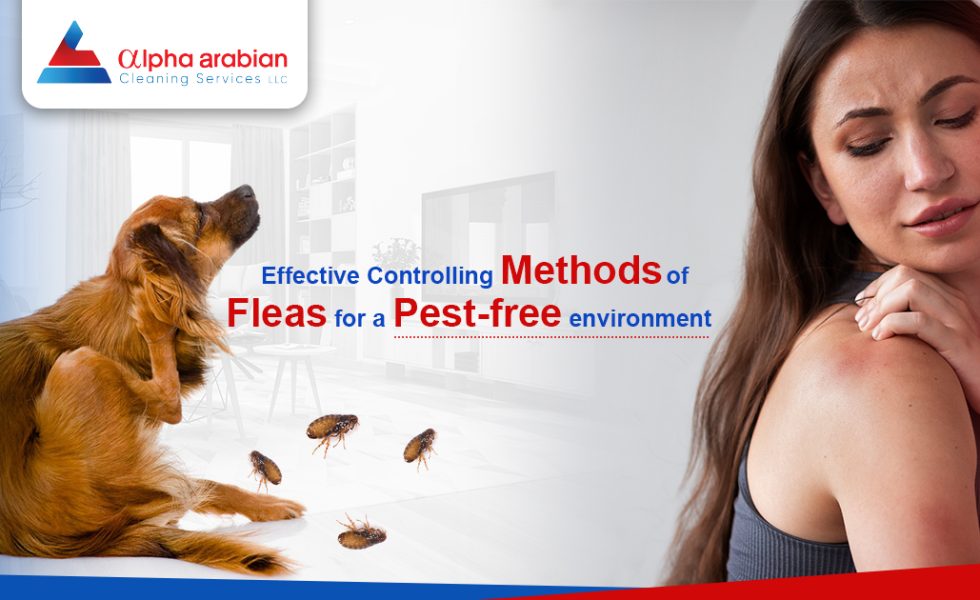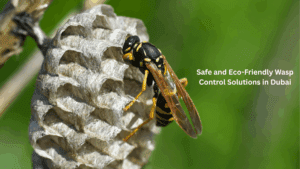Flies control strategies for the eradication of Indoor Pest Flies.
Indoor pest flies can be a persistent annoyance, infiltrating homes and establishments, but understanding their behavior and implementing smart fly control strategies can make a significant difference. There are several types of indoor pest flies that are annoying to humans like owl Midges , or Drain Flies, Phorid Flies, and Fruit Flies. Note down the characteristics and practical ways to manage their populations.
Owl Midge or Drain Fly: Owl Midges, with their moth-like appearance, measure a mere 2-4mm. Their nocturnal habits draw them to indoor lights, leading them to establish egg-laying sites in kitchens and bathrooms. The breeding ground for their larvae is often the gelatinous deposits along drains, and their sudden appearance might indicate plumbing issues. While they can carry pathogens, they’re not drawn to food. Fortunately, pesticides are rarely needed; disconnecting drains and eliminating breeding sites suffices.
Phorid Fly or Scuttle Fly: Phorid Flies, at 3mm, are known for their jerky movements. Breeding in moist decaying organic matter, they can infest a range of spaces from medical facilities to kitchens. The filth they’re associated with makes them potential carriers of pathogens into food. Residual insecticides are rarely required; the key is locating and eradicating breeding sites, even in unexpected areas like laboratory cultures.
Fruit Fly: Fruit Flies, recognizable by their red eyes, measure 3mm and breed in fermenting materials. Their presence in domestic spaces can signal unattended residues in milk bottles or overripe fruits. These flies, too, can be problematic in industrial settings such as canning factories. Since they breed in unsanitary areas, they pose a risk of carrying pathogens onto food. Eradicating breeding sites and efficient fly control strategies is pivotal, with insect light traps aiding in capturing adult flies.
Effective fly control strategies:
Sanitation: Maintaining a clean environment by regularly cleaning drains, eliminating decaying matter, and promptly discarding overripe fruits.
Breeding Site Elimination: Regularly inspect and clean drains, sink edges, garbage bins, and other potential breeding spots.
Hygiene Practices: Maintain good hygiene in kitchens, bathrooms, and other susceptible areas to discourage fly infestations.
Structural Repairs: Address leaks, plumbing issues, and cracks that might contribute to moisture-rich breeding sites.
Insect Light Traps: Use traps strategically to attract and capture adult flies, aiding in population control.
Professional Pest Management services: In severe infestations, consider seeking the assistance of pest management services in dubai for effective and targeted control.
When to call a professional pest management services?
If you are exhausted with indoor pest flies, effective pest management services in dubai involve a multi-pronged approach that focuses on. Understanding the behaviors and characteristics of the indoor pest flies enables homeowners and businesses to implement smart fly control strategies, reducing the nuisance and potential risks associated with these tiny yet bothersome pests.
Understanding Bed Bug Life Cycle and Prevention of BedBug Infestation
Bedbug infestations can quickly turn into nightmares, but with a comprehensive understanding of the bedbug life cycle and the prevention of BedBug Infestation strategies, you can effectively keep these pesky pests at bay. Let’s acquire knowledge of the various stages of the bedbug life cycle and discover effective measures for the prevention of Bedbug infestation.
- The Beginning: Bed Bug Eggs
The journey starts with tiny, pearly-white eggs measuring about 1mm in length. These eggs are in the hideouts of adult bed bugs – cracks and crevices in infested areas. With a lifespan of 3 months, these eggs transform from their initial white color to a translucent hue as the nymphs inside prepare to emerge.
- Incubation Period
The time it takes for these eggs to hatch varies with temperature. At different temperatures, the incubation period changes:
INCUBATION PERIOD (DAYS)
28 ͦC 5.5
25ͦC 7.1
23ͦC 9.2
18ͦC 20.2
15ͦC 34.0
13ͦC 48.7 (Life Cycle Not Completed)
7ͦC No Hatch
- Nymphal Stages
The nymphal stage follows, with five distinct stages of development. Between each moult, the nymphs require a blood meal. An extended nymphal period may result if a blood meal isn’t available.
- Life Cycle Egg to Adult
The duration from egg to adult bed bug varies with temperature:
28°C: 34 days
25°C: 46 days
23°C: 61 days
18°C: 125 days
15°C: 236 days
13°C: Not Completed
Bed bug development occurs between 13°C and 37°C.
- The Mature Stage: Adult Bed Bugs
Fully-grown adult bed bugs are 4-6mm in length and reddish-brown. Distinguished by their darker shade and small wing pads, these adults can live different durations depending on temperature. At 18-20°C, they survive for around nine months to a year, whereas at 27°C, the period is 15 weeks, reducing to 10 weeks at 34°C. Their adaptability and resilience are well-suited to a parasitic lifestyle.
- Surviving Starvation
Bed bugs can endure periods of starvation, adapting to their environment. The duration they can survive without food is temperature-dependent:
Starvation (Days)
23 ͦC 85(136) 69(127)
18 ͦC 152(260) 143(225)
15 ͦC – –
13 ͦC 338(470) 360(565)
7 ͦC 200(386) 286(465)
Understanding and Prevention of Infestation
Understanding the bedbug life cycle, from their tiny eggs to the resilient adults, can empower homeowners in their battle against infestations. Effective pest control strategies depend on monitoring temperature conditions and understanding their stages. If you suspect a bed bug problem, considering professional pest control services like Alpha Arabian Services might be your best solution. Prevention of bedbug infestation and eradication are your best allies in the fight against bedbug infestations.
Effective Analysis about Surplus Baiting and Pulsed Baiting for Rodent Control Service.
Numerous individuals worldwide are struggling with mouse infestations on their premises, posing threats to property and human well-being alike. These pests can cause damage to furniture, books, clothes, electric wires, plastic pipes, food supplies, valuable documents, and more. Once they infiltrate your home, they bring forth a host of destructive consequences. Beyond material damages, these intruders also pose significant health risks. While their presence is undoubtedly hazardous, there’s no need for alarm – a composed rodent control service is the ultimate key factor. Effective rodenticide is essential for a clean and safe environment, especially in areas prone to infestations. Two distinct approaches for rodenticide have emerged: Surplus Baiting and Pulsed Baiting.
Surplus Baiting:
This involves the use of first-generation anticoagulants that require rodents to ingest multiple doses over several days to receive a lethal dose of rodenticide. However, an interruption in the supply of bait or access to it can lead to rodents failing to ingest a sufficient dose, rendering the treatment ineffective.
One critical consideration in surplus baiting is the hierarchical nature of rodent populations. Dominant rodents tend to monopolize food sources, leaving subordinate rodents with limited access. To ensure the efficacy of this method, it’s important to ensure that there’s enough bait remaining for the subordinate rodents after the dominant ones have consumed their share. Additionally, due to the delayed onset of symptoms from the poison, dominant rodents might continue to consume bait even after ingesting a lethal dose.
To maintain a surplus of bait in each bait station, rodent control service operators need to replenish the bait every 1-2 days. This consistent baiting regimen continues until rodent activity decreases and fresh signs of rodent presence cease.
Pulsed Baiting:
Pulsed baiting, on the other hand, relies on second-generation anticoagulants that allow rodents to ingest a lethal dose in a single feeding. This eliminates the need for rodent control service operators to visit bait stations for every 1-2 days, as a single feeding is sufficient for a lethal outcome.
In pulsed baiting, smaller quantities of bait (typically 30-45g for rats and 15g for mice) are initially laid out. After 7 days, the bait points are replenished, by which time the dominant rodents would likely have succumbed. The baiting schedule then proceeds every 7 days until rodent activity diminishes entirely.
Comparing the Strategies:
Both these baiting have their advantages. Surplus baiting ensures that a continuous supply of bait is available to subordinate rodents even after dominant ones have fed, enhancing the overall effectiveness of the treatment. However, it demands more frequent manpower and bait inputs. Even though, when dominant rodents ingest a fatal dose, they continue to feed and finally jumping to the poison.
Pulsed baiting, on the other hand, reduces the need for frequent bait replenishment and manpower involvement. The operators of the rodent control service in dubai can make effective approaches in terms of resource utilization, but it’s essential to follow a consistent baiting schedule to ensure that rodent activity is fully controlled.
Summing up
In terms of rodent control, both the baiting has its merits. The choice between these strategies depends on factors such as rodent population dynamics, available resources, and the expertise of the rodent control service in dubai. While surplus baiting emphasizes maintaining a consistent surplus of bait to cater to subordinate rodents, pulsed baiting capitalizes on second-generation anticoagulants to reduce the frequency of bait replenishment. By understanding the nuances of these strategies, rodent control professionals can make informed decisions to effectively manage rodent infestations with the help of rodenticide and create healthier living and working environments.
How Cockroach Infestations Affect the Public Health from Pest Control Experts
Cockroach infestations in Dubai have become a significant concern in recent years, not only due to their repulsive appearance, but also because of their potential impact on public health. This comprehensive blog post finds the lesser-discussed aspects of cockroach infestations that extend beyond infectious risks. From allergies to psychological effects, we explore the wide-ranging consequences of these unwanted pests and the need of cockroach control services in Dubai.
Cockroach Allergies
Recent research has unveiled a troubling phenomenon – human sensitivity to proteins derived from cockroaches. The prevalence of this sensitivity is alarmingly high, especially among asthmatic children living in homes infested with German cockroaches. An estimated 79% of people are sensitive to cockroach infestations, adding to the evidence that these pests can pose non-infectious risks.
Laboratory workers who handle captive cockroach colonies are also at risk for dermatitis and conjunctival edema. Workers have experienced anaphylactic shock in these environments, demonstrating the importance of robust pest control measures.
Cockroach Allergens and Air Quality
The impact of cockroach allergens extends beyond infested homes. It is possible to detect these allergens in the air around cockroach colonies, posing a threat to a wider population. Even homes without visible signs of infestation may contain measurable amounts of cockroach allergens, underscoring the urgency of effective pest control. Alpha Arabian offers specialized cockroach control services to address cockroach allergens.
Asthma and Cockroach Allergens: An Alarming Correlation
Studies suggest a correlation between sensitization to cockroach allergens and the rise in asthma mortality and morbidity, particularly within specific populations. These findings highlight the pressing need to address cockroach infestations comprehensively.
Pest Control Experts to the Rescue
Pest Control Experts are essential in Dubai, where a rapidly growing urban landscape is susceptible to infestations. Alpha Arabian provides specialized roach pest control services to combat cockroach infestations effectively. With expertise tailored to the unique challenges of the region, Alpha Arabian roach pest control services play a vital role in maintaining public health.
Psychological and Sociological Impacts
Beyond physical health, cockroach infestations carry psychological and sociological implications. In chronically infected, poor-quality housing, tenants often experience reduced self-esteem and even shame. The association between cockroaches and poor hygiene amplifies these negative perceptions. Our cockroach control services extend not only to eradicating pests but also to fostering healthier, harmonious living conditions that bolster community bonds.
Balancing Pest Control and Wellbeing
While rigorous pest control measures are essential, an obsessive approach to eliminating arthropods can lead to an unnecessary fixation. Striking a balance between maintaining hygiene and seeking pest control services is key to ensuring a healthy living environment. Our top-tier cockroach control services in Dubai acknowledge the significance of this balance, offering you a comprehensive solution that not only eradicates pesky intruders but also nurtures a wholesome living space.
Roach Pest Control Experts in Dubai
cockroach infestations are a multifaceted challenge that extends beyond infectious factors. The heightened awareness of sensitization, the potential correlation with asthma, and the psychological effects emphasize the need for effective pest control experts.
By embracing the expertise of Alpha Arabian roach Pest Control in Dubai, you can safeguard your home and contribute to a healthier community. Understanding the profound impact of cockroach infestations on public health empowers you to make informed decisions and take proactive steps toward a safer living environment. If you need further guidance on tackling cockroach infestations or ensuring your living spaces are pest-free, reach out to Alpha Arabian Cockroach Control Services today.
Eradicate pharaoh ant infestation with expert pest control service
When it comes to household pests, the tiny but relentless pharaoh ant has gained quite a reputation. Measuring a mere 1.5 to 2mm in length, this pint-sized pest bears a significant potential for disruption, particularly in environments where food and medical supplies are at stake. They exhibit the potential to propagate infections, particularly concerning their presence in hospital settings. Research has demonstrated that these ants can act as vectors for over 12 infectious microorganisms.
Furthermore, this pest can escalate into a significant concern within apartments, schools, office buildings, and other environments where food is manipulated. While they do partake in sweet substances, and display a distinct preference for indulging in greasy and fatty meats.
Let’s see the peculiarities, habits, lifecycle, and the crucial role of effective pest control service in curtailing its rampant infestations.
It may seem innocuous at first glance with their golden yellow to brown bodies adorned with distinctive black markings on their abdomens. However, beneath their diminutive exteriors lie complex behaviors and tendencies that have garnered them a reputation as formidable adversaries in the pest world.
Habitat and Nesting Preferences:
The ant exhibits a proclivity for nesting in hard-to-reach and warm, humid locations within buildings. Cracks, crevices, and concealed corners become their sanctuaries, making them a challenge to eradicate. They gravitate towards environments that offer high temperatures and humidity, with an uncanny affinity for water sources. From wall sockets to kitchens and bathrooms, they assert their presence wherever these conditions prevail.
Public Health Concerns:
The dietary preferences underscore its adaptability and persistence. These tiny terrors display an affinity for sweet and fatty foods, making kitchens, bakeries, and restaurants particularly susceptible to pharaoh ant infestations. Their appetites extend to dead insects, meat, and grease, broadening their impact on domestic and commercial settings. Yet, the stakes heightened when the ants infiltrated hospitals and food preparation establishments. Their ability to breach packaging and contaminate sterile supplies raises serious public health concerns, warranting urgent intervention.
Lifecycle and Reproduction:
The life cycle unfolds relatively short, underscoring its capacity for rapid proliferation. Under optimal conditions of 27°C temperature and 80% relative humidity, the process takes shape:
- Eggs hatch within 7.5 days.
- The larval stage persists for 18.5 days.
- The pre-pupal stage spans 3 days.
- The pupal stage endures for 9 days. The entire metamorphosis from egg to adult worker culminates in approximately 38 days, a testament to the ant’s tenacity.
Control Strategies:
From households to commercial ventures confronting a Pharaoh ant infestations necessitates a multi-faceted approach, tailored to the specific context of the invasion. While homeowners can adopt pest control service such as denying ants access to food sources and judiciously using retail aerosol insecticides, larger-scale pharaoh ant infestations demand the expertise of licensed pest control service operators. The deployment of specialized baits emerges as a potent weapon in the battle against these miniature invaders, particularly in spaces like hospitals, food factories, and other high-risk establishments.
Summing Up
The ant may be diminutive, but its potential for disruption is immense, particularly in settings where food safety and public health are paramount. Understanding its habits, lifecycle, and the urgency of effective pest control service is crucial to prevent pharaoh ant infestations and also safeguarding our homes, businesses, and medical facilities from this formidable foe. By uniting knowledge and action, we can fortify our defenses and ensure that their reign of them remains confined to the annals of history.
Optimal pest control service through our innovative pest management system
In the realm of property maintenance and public health, effective pest management stands as an essential pillar. Alpha Arabian has revolutionized the pest control industry with its innovative and scientific approach known as the total pest management system. By integrating this system, Alpha Arabian pest control service ensures unparalleled protection against a variety of pests, ranging from the common housefly to the elusive Redback spider. Let’s delve into the core aspects of this cutting-edge pest management concept, exploring its seven-step process and the diverse types of pests it addresses.
The seven-step of the Total Pest Management System :
Alpha Arabian’s total pest management system is not just a conventional pest control service; it’s a meticulously designed process that combines expertise with science. Here’s an overview of the seven steps that make up this groundbreaking system:
Inspection:
The foundation of an effective pest management system lies in understanding the pest’s environment. The pest control technicians conduct a thorough inspection of every facility, focusing on critical pest activity zones, such as entry points, water sources, food sources, harborage and breeding points, as well as customer and employee areas.
Facility Layout Analysis:
By analyzing the layout and traffic patterns of a facility, potential problem areas are identified. This step ensures that the treatment strategy is tailored to the facility’s unique characteristics, including the flow of people in and out of the building.
Pest Identification:
Different pests demand distinct treatment approaches due to variations in their life cycles, habitats, and behaviors. Collaboration between operators, customers, and facility employees helps gather accurate data on pest sightings, aiding in prevention and control.
Customized Program:
Cookie-cutter solutions have no place in the total pest management system. Location, climate, building conditions, and age are key factors that guide the creation of a customized pest control program. A comprehensive analysis, including input from key employees, ensures a targeted and effective strategy.
Sanitation Consultation:
A crucial aspect of TPM is maintaining a rigorous daily sanitation schedule. This proactive measure has been taken by the pest control service against the pest which directly impacts factors contributing to pest buildup, both inside and outside the facility.
Treatment Strategies:
Prioritizing non-chemical control methods showcases Alpha Arabian’s commitment to environmentally friendly practices. Chemical options are considered only after exhausting alternative solutions.
Ongoing Monitoring & Maintenance:
Continual vigilance is paramount. Accurate reporting of pest sightings and meticulous documentation for clients and regulatory agencies ensure the sustained success of the TPM program.
Types of Pests Addressed by TPM:
There are various types of pests addressed by Alpha Arabian’s pest control service. Their comprehensive approach effectively tackles an array of pests that threaten both public health and property integrity. Let’s take a closer look at some of the types of pests that the pest management concept addresses:
Flies: The common housefly, often underestimated, is a potent carrier of diseases. Alpha Arabian aims to control fly populations by targeting breeding and harborage sites.
Ants: Social insects like ants can infiltrate buildings, causing contamination issues. The pest management concept targeted an approach to prevent and manages ant infestations while considering their nesting patterns.
Wasps: While not carriers of infectious diseases, wasps can contaminate food and pose risks to individuals with allergies. The TPM strategies ensure their effective management.
Fleas: Parasitic fleas, commonly associated with pets, can infest human living spaces. TPM’s pest control measures extend to eradicating these blood-feeding pests.
Cockroaches: Recognized as significant public health pests, cockroaches can spread diseases. TPM’s tailored solutions to combat cockroach infestations, considering the specific species prevalent in Dubai.
Fabric and Food-Damaging Insects: TPM addresses a range of fabric-damaging insects like beetles, weevils, and moths, which also pose food contamination risks. Its multifaceted approach ensures comprehensive protection.
Bedbugs: Alpha Arabian’s pest management concept employs strategies to combat bedbugs, nocturnal parasites that feed on human blood, emphasizing the importance of proactive management.
Redback Spiders: The presence of venomous redback spiders in Dubai demands immediate attention. TPM includes specialized measures to mitigate the risks posed by these arachnids.
Conclusion:
Alpha Arabian’s TPM transcends conventional pest control, offering a scientific, holistic, and proactive approach to pest management. Through its seven-step process, Alpha Arabian ensures that every client benefits from a customized and effective pest control strategy. By addressing the various types of pests, from disease-carrying flies to venomous spiders, TPM stands as a true guardian, safeguarding premises and public health. Choose TPM and experience a new paradigm in pest management that offers both peace of mind and lasting protection.
Guidelines for managing types of fleas and flea infestation
Fleas, those tiny but troublesome insects, have been pests to both humans and animals for centuries. With their ability to spread diseases and cause skin irritations, fleas have earned a notorious reputation as unwelcome houseguests. There exists a significant risk of these pests taking up residence within a pet’s body, potentially leading to harm for humans as well. Additionally, the presence of fleas within your living space can be attributed to elevated humidity levels and soaring temperatures. The maintenance of these specific conditions requires careful attention. Consequently, effective flea control measures are of utmost importance, particularly in regions like Dubai.
Let’s discuss the different types of fleas, the risks they pose, and effective methods for flea control.
Types of Fleas:
Human Flea (Pulex irritans): The human flea, as the name suggests, primarily targets humans, along with pigs, dogs, and goats. Found almost everywhere around the world, this flea is more common in warmer regions and can cause dermatitis or allergies due to its bites. It also serves as a vector for diseases like plague and typhus.
Rat Fleas (Xenopsylla spp, Nosopsyllus fasciatus): Rat fleas, including species like Xenopsylla cheopsis, Xenopsylla astia, and Nosopsyllus fasciatus, are known for their association with rodents. X. cheopis is a significant vector of the plague, while Nosopsyllus fasciatus is more common in temperate regions. These fleas can spread infections like typhus and plague, making them a serious concern for the safety of public.
Cat Flea (Ctenocephalides felis): One of the most common domestic pests globally, the cat flea feeds on cats, dogs, goats, and even humans. With a stronghold in temperate developed countries, it can transmit diseases such as typhus. Its prevalence and ability to bite multiple hosts make effective flea control crucial.
Dog Flea (Ctenocephalides canis): Less common than its feline counterpart, the dog flea prefers dogs and humans but rarely targets cats. While it might not be as widespread, it still poses a potential risk for disease transmission, including typhus.
Chicken Flea (Ceratophyllus gallinae): Targeting chickens, this flea is a concern in animal production units. While it might not directly impact humans, it’s a vital consideration for livestock health and requires proper pest control services.
Chigoe Flea (Tunga penetrans): Found in the Americas, Africa, and parts of India, the chigoe flea is a unique pest that burrows into the host’s skin. it primarily affects animals like rodents, cats, and dogs, its impact on humans can lead to discomfort, infections, and localized swellings.
Dealing with a flea infestation requires a multi-faceted approach to ensure effective pest control services and prevention:
Hygiene and Cleaning: Regular cleaning of living spaces, pet bedding, and grooming your pets can significantly reduce flea infestation.
Pet Care: Regularly bathing and grooming your pets, along with using appropriate flea control products recommended by veterinarians, can help keep fleas at bay.
Environmental Treatment: Treating indoor and outdoor areas with insecticides specifically designed for fleas can break the flea life cycle.
Professional Pest Control Services: In a severe flea infestation, seeking the assistance of professional pest control services is crucial. They can employ targeted treatments to eliminate fleas and prevent their return.
Flea Prevention: Preventive measures, such as using flea collars, topical treatments, and maintaining a clean living environment, can help avoid future infestations.
Conclusion:
A flea can pose risks, mainly affecting both humans and animals. Understanding the different types of fleas and their infestations is key to effective pest control services. By understanding and addressing these minuscule yet impactful pests, we safeguard well-being and harmony within our ecosystems. Remember, when it comes to several types of fleas, prevention of flea infestation is the best strategy.
Pest Control Services are essential for improved LifeStyle in Labour Camps
In Dubai, ensuring a pest-free environment is important for maintaining a healthy and comfortable living space for the staff accommodated in labour camps. As per Dubai municipality guidelines and rules, all labour camps in Dubai require pest control contracts with monthly services.
Common Pest Challenges in Labour Camps
The major labour camps in Dubai locates in Muhaisanah, Sonapur, Al Quoz industrial areas, Jabel Ali industrial areas, and Dubai Investment Park areas. These camps are susceptible to pest infestations due to continuous cooking and dining activities.
Cockroaches, bed bugs, and other insects thrive in such environments, posing significant health risks to the inhabitants. Regular pest control measures help prevent these issues and maintain a proper LifeStyle in Labour camps. Having pest control contracts with monthly services ensures that the camp premises meet the required cleanliness and pest-free living conditions.
Hygiene and Sanitization Management
Pests can create unsanitary conditions like leaving droppings, excrement, and nests in various areas of the labour camp. Such unhygienic surroundings lead to the contamination of food supplies, water source and cause foodborne illnesses and other health problems.
Maintaining hygiene and sanitation on a daily basis can be challenging for labour camps. Alpha Arabian Pest Control offers regular intervals of cleaning, waste disposal, and sanitation services, along with pest control measures. It helps labour camps meet minimum hygiene standards and uphold the camp’s reputation. Through pest control contracts the LifeStyle in Labour Camps improved to a cleaner and healthier for the residents.
Comprehensive Pest Control Solutions:
For addressing pest-related concerns in Labour Camp, Alpha Arabian offers annual contracts with a wide range of pest removal services. Our various services are cleaning services, sanitization services, spray treatments, gel treatments, cockroach treatments, bedbug removal, snake control, extermination, rat control, and cat control. With our professional and trained staff, we carry out all types of pest control and cleaning tasks for a pest-free environment.
Technical Evaluation and Eco-Friendly Solutions
Labour camps often struggle with managing hygiene and sanitation daily, resulting in breeding grounds for insects and pests. Alpha Arabian Pest Control’s technical team conducts thorough evaluations of labour camps to understand specific pest-related problems. Based on their survey report, they allocate different equipment and materials for providing professional services. Alpha Arabian pest control services use eco-friendly and government-approved liquids to ensure a safe and pest-free environment for the residents.
Trusted Pest Control Partner
Alpha Arabian pest control services in Dubai, offer diverse pest control contracts tailored to promote improved Lifestyle in labour camps. The company emphasizes the significance of a healthy workforce and ensures proper disinfection, cleaning, and pest control services at regular intervals. By availing of their services, labour camps can uphold a high standard of hygiene, enhancing the reputation of the company.
Adhering to pest control guidelines and regulations is mandatory to promote an improved Lifestyle in labour camps. Alpha Arabian’s dedication to providing high-quality pest control services ensures that labour camps maintain hygiene, sanitation, and a pest-free environment, benefiting both the workforce and the reputation of the company. Choose Alpha Arabian pest control services and create a safe and healthy pest-free environment for your labour camp residents.
Effective Controlling Methods of Fleas for a pest-free environment
Fleas become a pesky and persistent nuisance in homes, especially for pet owners. For the efficient controlling methods of Fleas and to ensure a pest-free environment, it is essential to understand flea’s biology. From eggs to adults, stages of the flea life cycle present unique challenges for eradication.
In this blog, we explore the Flea life cycle and flea infestation. We can equip ourselves with the knowledge needed to combat these tiny yet tenacious pests and maintain a healthy environment.
The Flea Egg Stage
The flea life cycle commences with the Flea Egg Stage, during which adult female fleas lay eggs in the host’s burrow, nest, or surrounding environment. The eggs are oval, with white colouration, and they are covered in dust and debris, serving as a form of camouflage and protection. Each female flea can lay 5 to 20 eggs daily, leading to rapid population growth in their preferred habitat.
The incubation period for fleas eggs not fixed, as it depends on various factors like the flea species, temperature, and humidity. It can last anywhere from 2 to 14 days. Eggs laid while the female is on the host may fall to the floor due to a lack of specialized attachment mechanisms, which lowers their chances of survival.
The Larva Stage
After the flea eggs hatch, they give rise to pale, slender, legless larvae with toothed mandibles, three thoracic, and ten abdominal segments. These larvae actively seek food and avoid light, feeding on organic debris like adult flea excrement, digested blood, dead insects, and food scraps in the host’s lair.
In unclean environments or heavy infestations, flea larvae can be found in bedding, furniture, carpets, and floor cracks. They prefer stable microclimates, and adverse conditions may prolong their larval stage, but typically, three instars develop within 10 to 20 days. Mature larvae, about 5 to 10 mm long, create a cocoon using modified salivary glands, which collect debris, providing camouflage during their vulnerable pupal stage.
The Pupa Stage:
Pupation occurs about 2 to 3 days after the larva has formed its cocoon. In flea infestation, adult fleas usually emerge within 7 to 14 days. However, adult fleas emerge from the cocoon reliant on specific stimuli produced by the host, such as vibration and warmth. In the absence of these triggers, adult fleas may remain dormant in the cocoon for up to a year. This capability maximizes their chance of encountering a host and has significant implications for public health pest control strategies.
The Adult Stage:
Approximately 24 hours after emerging from the cocoon, adult flea’s are ready to feed on blood. Both male and female fleas require blood meals to survive, with adult fleas being able to live up to four months without feeding if necessary. However, when provided with regular blood meals, adult fleas can live for over a year.
When seeking a host, adult fleas make undirected leaps of about 20 cm until they encounter one. Most flea species have preferred host species, but other hosts may serve as a source of blood meals. The female flea’s reproductive potential is achieved only when the preferred host species is available. For example, humans may serve as an alternative host for public health flea species like Cat, Dog, and Rat fleas.
Adult fleas avoid light and exploit their body form to navigate through hair or feathers while feeding multiple times during the day or night. Their droppings consist of digested blood, meals, and fluids voided during feeding, leaving evidence of infestation in bedding and furniture in heavily affected homes.
Controlling Methods of Fleas for a Pest-Free Environment:
We can employ several controlling methods of Flea to achieve a pest-free environment.
- Regular Cleaning and Vacuuming: Thoroughly cleaning and vacuuming your living space, especially areas where pets spend most, helps to reduce flea infestation.
- Wash Bedding and Pet Accessories: Regularly wash your pet’s bedding and accessories in hot water to eliminate fleas and their eggs.
- Pet Grooming: Regular grooming and bathing of pets can help remove fleas from their fur.
- Flea Treatments: effective flea treatments for your pets, such as topical treatments, oral medications, or flea collars.
- Environmental Insecticides: Use environmentally-friendly insecticides or flea control products to treat infested areas in your home, focusing on carpets, furniture, and cracks.
Need for Professional Pest Control Service
Professionals in pest control like Alpha Arabian Pest Control Services possess the expertise, knowledge, and specialized treatments necessary to tackle flea infestation. By understanding the flea life cycle and implementing effective controlling methods for Fleas, we can create a pest-free environment and protect our living spaces from these troublesome pests.
